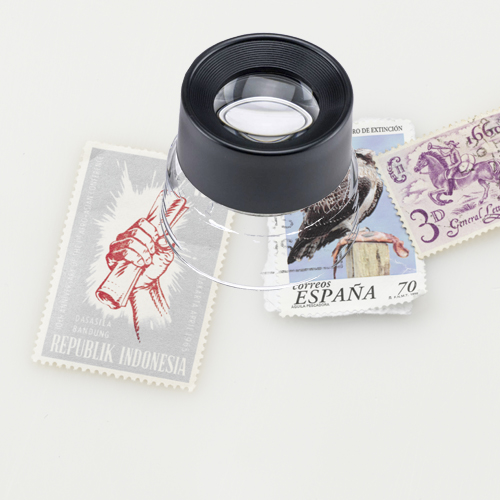Table of Content
- Is it possible to build a triplet apochromatic refractor?
- What Is The Best Triplet Lenses To Buy?
- Create an account or sign in to comment
- What is Triplet Lenses?
- HTS 203A0 10x 21mm Chrome Triplet Jeweler's Loupe with Leather Case
- Similar to this post
- Loupe 10x Oval Hasting Triplet 18mm Black Quality Metallic, Focal 1" Clarity
I have compared it to a four element optimized glass tessar lens and the tessar is slightly better giving a 32 micron spot for the paraxial axis. For most application the slight improvement of the tessar over the cooke triplet does not justify the cost and added complexity. For us it shouldn't matter too much as the cooke has twice the on-axis resolution that we need. When a lens is used to focus parallel rays of light, the focal length is the distance from the lens to the point of focus. This means that for a single element camera lens, the focal length determines the distance the lens needs to be from the film or sensor.
Nikon, Canon, Leica, Pentax, Sigma, Tokina, and a host of other lens makers are all striving to bring you the sharpest lenses with all optical aberrations reduced to the minimum. Because with lenses, as with life, sometimes it’s the imperfections that make things interesting. The back of the lens is treated in the same way except the sign of the radius is reversed. This means that a convex shape is a negative radius and a concave shape is a positive radius.
Is it possible to build a triplet apochromatic refractor?
Although functional, the preceding lens still doesn’t have a mechanism for adjustable focus. Let’s look at a few approaches to solve that problem. The first approach is to “recycle” the helical focuser from an old lens. Mounts and filter threads can be attached with Super Glue if necessary. This lens also includes an old iris diaphragm I found for $3 at a local surplus shop. Attaching rings from junk filters to both the focuser and the diaphragm will allow you to use them in an interchangeable system.

You might be able to make it work by adjusting the lamp-to-condensor-fresnel distance to make the rays going to the field fresnel into a slightly diverging cone. This increases the distance from the field fresnel to the focussed image of the lamp arc. Depending on how we address the mechanics of the lens, focal lengths in the range of 60 – 200 mm are good candidates for DIY camera lenses. The general approach we will take is to draw a 2D profile of half of the lens on the XY plane and then create a revolve boss around the X axis. The X axis is the optical axis (i.e. the center of rotation for the lens).
What Is The Best Triplet Lenses To Buy?
While spherical aberration dominates the on-axis field. Mark, you have exhumed an ancient thread, so I don't know if you'll get many answers. I have never tried to use an ordinary triplet lens as a macro lens, but here is some speculation. The Cooke Triplet was the basis of all of the high speed lenses used in 35mm photography.
Because the curvature is so small it may appear as a straight or negative surface on a drawing. There won't really be much work to do, unless he is grinding extra-large glass lenses for you. Stock lens blanks should just be sitting on somebody's shelf already made up and polished. If you are lucky enough to have access to bellows, you have an ideal focuser for homemade lenses. The last step is to generate the three lenses needed for the triplet using the values from the patent along with the focal length. Swing out loupe design protects the loupes lens when it is carried and acts as a handle when you use the loupe.
Create an account or sign in to comment
The first experiment i use a russian enlarger lens 75mm with a biconcave lens on rear for focusing, the problem is that all time i focus, i need to disassemble a peace of camera to move the rear biconcave lens. If you want excellent macro performance, consider buying a second-hand enlarging lens or a process lens. Decent enlarging lenses in barrel mounts sell for almost nothing now, and you can occasionally find them mounted in shutters. Yes, I still have, and sometimes use a 9 1/5" f 4.5 Wollensak Velostigmat. All of the Velostigmats were 3 element as was the Argus Cintar used in the Argus C3 cameras . It will be grinding each face to the correct radaii that is the difficult area.
Old style macro extension tubes, such as a set of Nikon K rings, provides a shortcut. One side of the K2 ring mounts to the camera and the other side has a thread that fits 52 mm filters. This 52 mm thread is a convenient standard to use for quickly connecting multiple lenses, spacers, focusers, and diaphragms into a working lens . Here is a 75 mm lens along with some aperture rings. Note that the achromat was friction mounted to three 58 mm rings that were recycled from some junk filters. A 52 to 58 mm step up ring allows this lens to fit my 52 mm standard.
(Lenses designed with this have a 30 degree field of view.) I usually just use the chart at the bottom of the page. I know that a 1000 mm + 1000 mm duplet works very well with a 15" LCD. The field angle is about 32 degrees. With a shorter focal length and a 15" LCD, the field angle increases so it may not work as well. If you use a smaller LCD, then the field angle may decrease. You could try making one with off-the-shelf CR-39 plastic lenses to see if it works for your projector.
When a lens designer starts a design, he has a set of goals. Telescope objective designers don't care how their lens performs with light entering at a 20 degree angle, because it will be mounted in a long tube with a tiny eyepiece at the other end. Rays coming in at more than 1 degree will never make it to the eyepiece. A particular telescope objective might work okay with a 20 degree off-axis ray, but it might not. The mechanics involved in making lenses is often more challenging than the optics. One possibility is to go for a reusable, interchangeable-parts approach.
Align these on a flat surface so the view through the lens is projected onto the card. This point is the objective lens’s ‘principal focus’ and the distance from here to the centre of the lens is called the ‘focal length’. We are now at the paraxial thin-lens starting point for the Cooke Triplet. Surface 3 is not useful since rays are going from and into the same glass, so we will delete that. Then we will go ahead and add 4 mm of thickness to the elements and 2 mm of thickness to the airspaces.

Perhaps in the future but it would be very expensive to have made. The number of elements jumps up to about lenses and some of them would be hard to make. If I am going to design a zoom lens it is going to be a variable compression anamorphic lens which will work like a zoom lens but only in the vertical or horizontal plane. I will be going to my local optics shop in the next few days. Do you have any good advice on optics to use with some sort of zoom lens? I have the ability to machine very accurate parts for the design.
The heart of any refractor is its convex glass objective lens, which is mounted close to the front of the hollow telescope tube. A triple convertible lens is a lens that provides three focal lengths in one. The front element has one focal length, the rear element a different focal length, and by screwing them together the whole intact lens has a shorter focal length. For example, some Schneider Symmars from the early 1950s and before were designed like this. Triple convertible lenses can have other designs as well.

The only positive aspect of that is that with the lens so diffration limited, maybe the lens performance does not have to be so great to start with. I happen to operate the CNC lathe our company uses and am very interested in the possibility of manufacturing my own lenses. Metals are what we mostly deal in with stainless steel as the most common , although I have done some telfon machining.
Triplet Lenses is a composite lens consisting of three single lenses. The triple-lens allows the lens designer to overcome the Seidel aberration. Very expensive objectives, which often employ three specialist glass elements , focus all the visual wavelengths at one point and are called ‘apochromatic’, but they’re more expensive. Unfortunately, not all wavelengths of light are refracted by the same amounts, so single lenses cause the coloured components of the white-light spectrum to focus at different points. The first telescopes consisted of a single convex objective lens with a concave eyepiece lens at the other end. At the far end of the tube from the objective lens is the eyepiece, arranged so that its principal focus coincides with that of the objective lens.

No comments:
Post a Comment